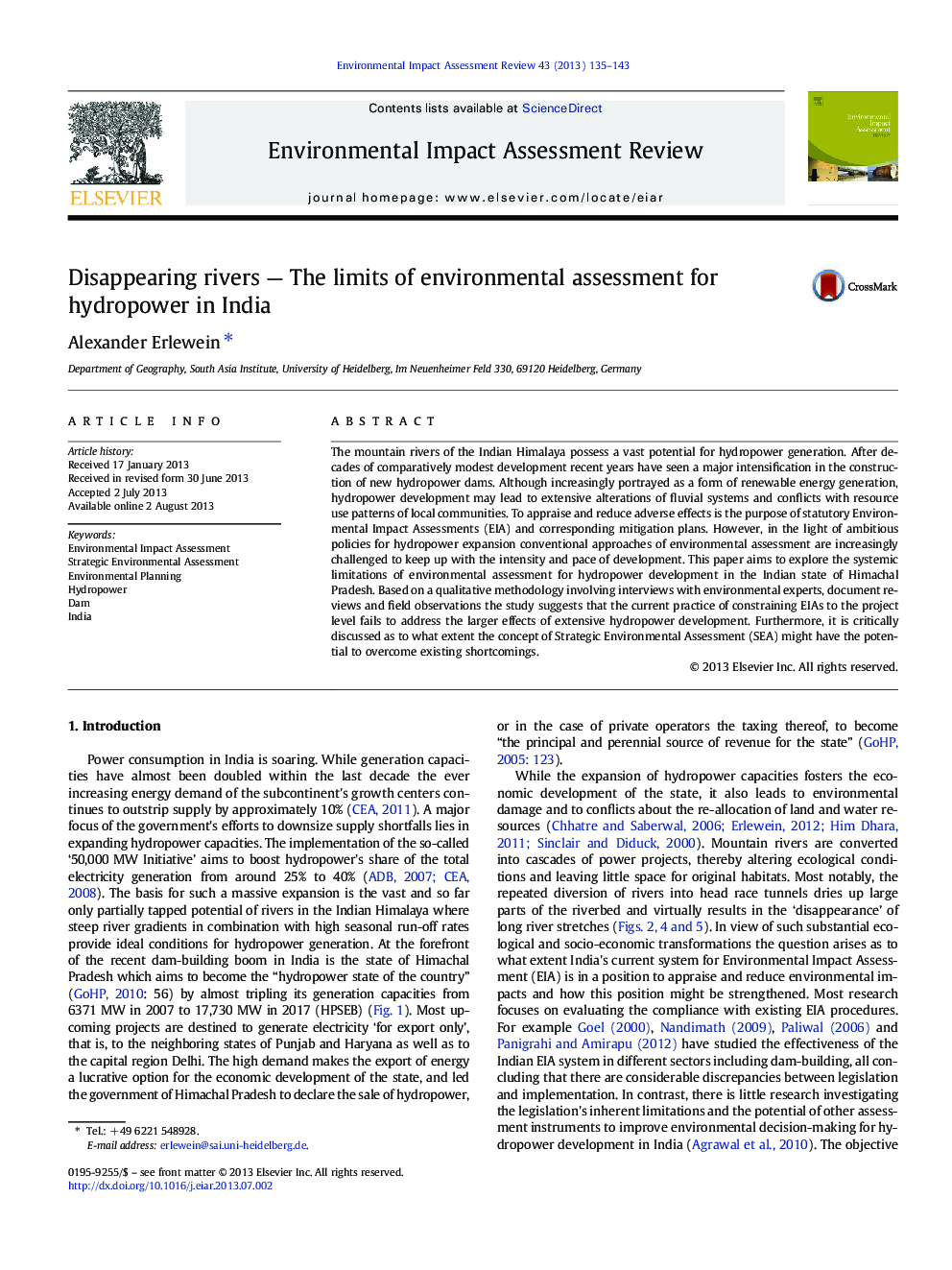| Article ID | Journal | Published Year | Pages | File Type |
|---|---|---|---|---|
| 7465589 | Environmental Impact Assessment Review | 2013 | 9 Pages |
Abstract
The mountain rivers of the Indian Himalaya possess a vast potential for hydropower generation. After decades of comparatively modest development recent years have seen a major intensification in the construction of new hydropower dams. Although increasingly portrayed as a form of renewable energy generation, hydropower development may lead to extensive alterations of fluvial systems and conflicts with resource use patterns of local communities. To appraise and reduce adverse effects is the purpose of statutory Environmental Impact Assessments (EIA) and corresponding mitigation plans. However, in the light of ambitious policies for hydropower expansion conventional approaches of environmental assessment are increasingly challenged to keep up with the intensity and pace of development. This paper aims to explore the systemic limitations of environmental assessment for hydropower development in the Indian state of Himachal Pradesh. Based on a qualitative methodology involving interviews with environmental experts, document reviews and field observations the study suggests that the current practice of constraining EIAs to the project level fails to address the larger effects of extensive hydropower development. Furthermore, it is critically discussed as to what extent the concept of Strategic Environmental Assessment (SEA) might have the potential to overcome existing shortcomings.
Keywords
Related Topics
Physical Sciences and Engineering
Energy
Renewable Energy, Sustainability and the Environment
Authors
Alexander Erlewein,
